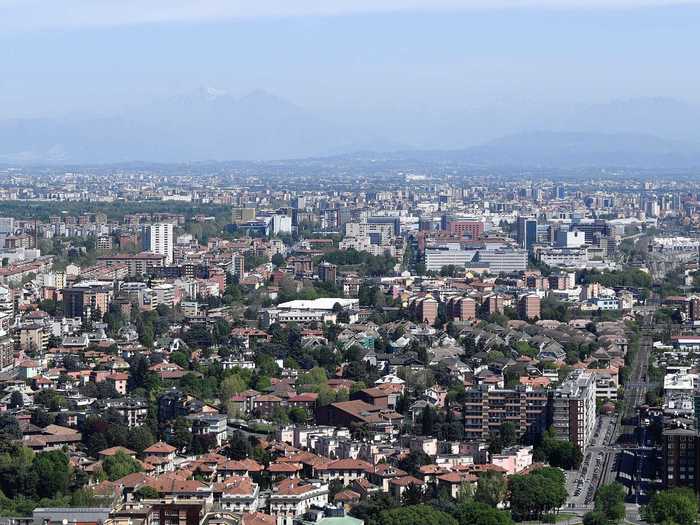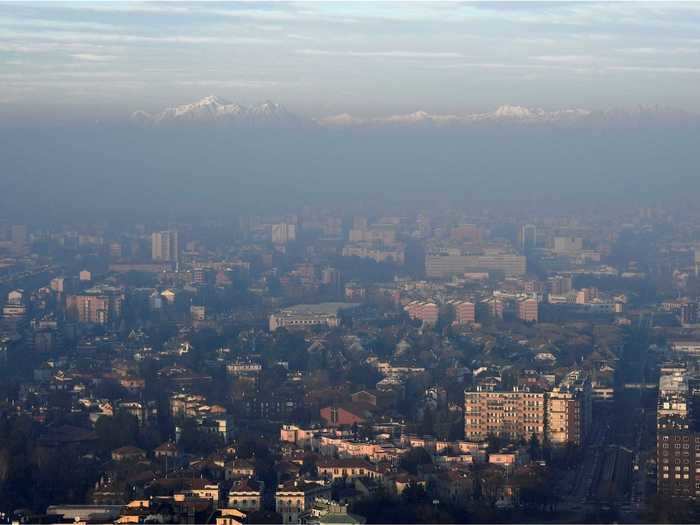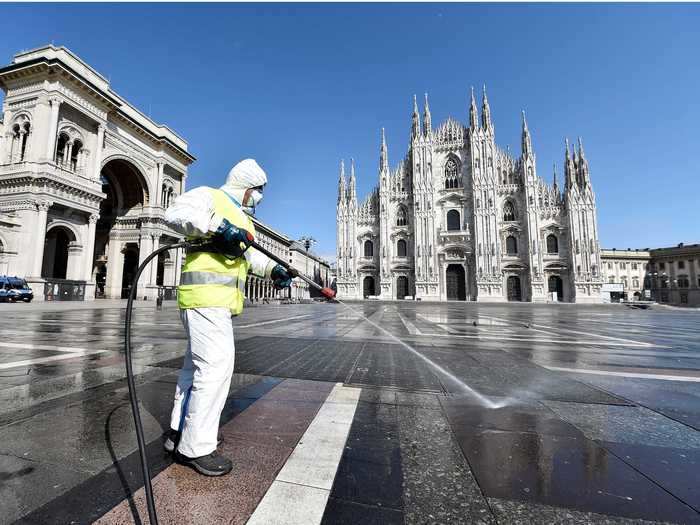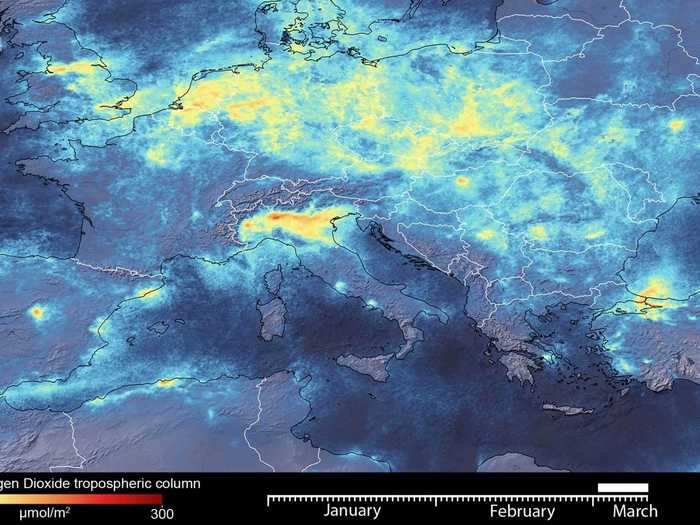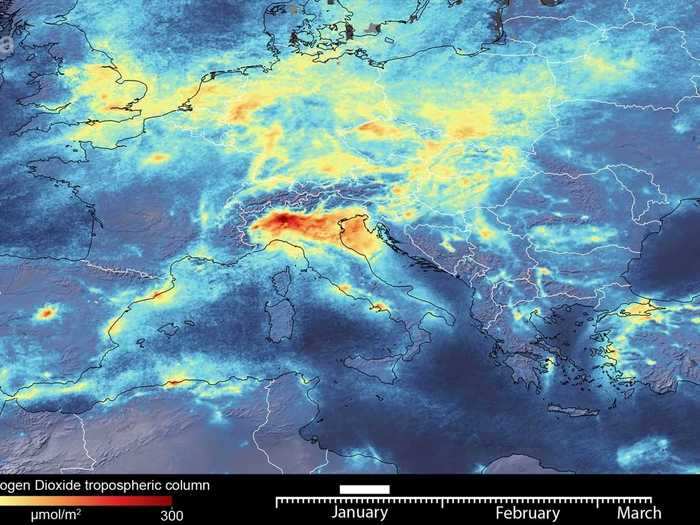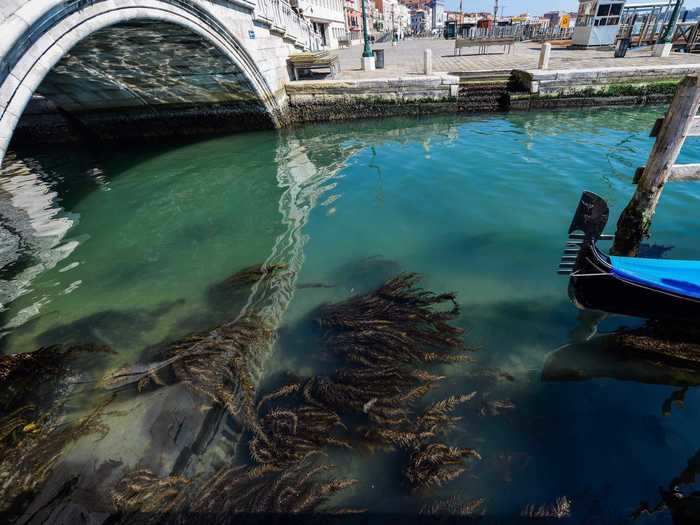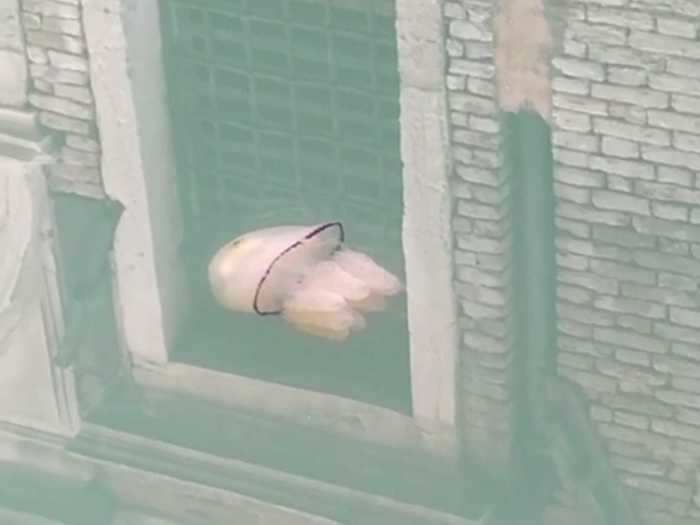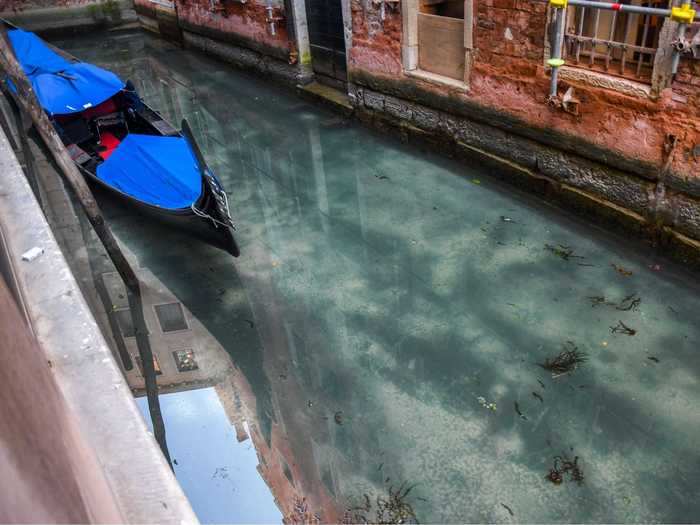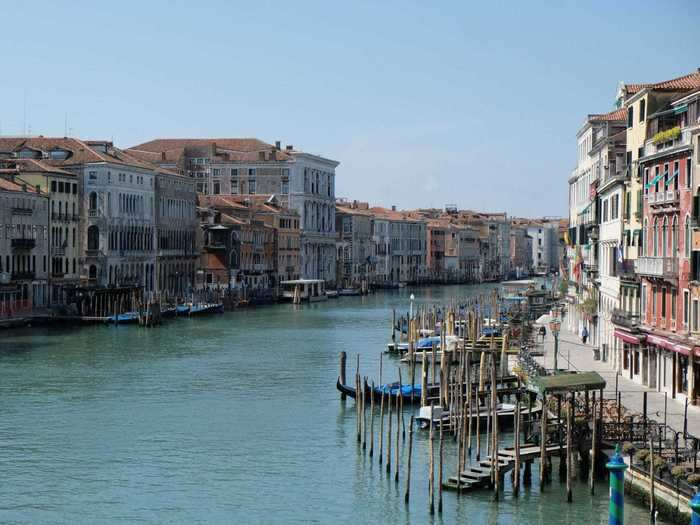Seaweed in clear waters in a Venice canal on March 18, 2020.ANDREA PATTARO/AFP via Getty Images
- Italian Prime Minister Giuseppe Conte put the entire country's 60 million citizens on strict lockdown on March 10.
- Since then, Venice's canals appear clearer than ever since boat traffic no longer churns up sediment.
- The European Space Agency found a notable drop in Italy's air pollution since the beginning of the country's lockdown.
- Visit Insider's homepage for more stories.
Italy has been on national lockdown since March 10.
As humans hunker down indoors, the natural world is positively thriving.
In Venice, canals are so clear that you can see to their bottom, while Milan, which has historically struggled with smog, is even thinking about ways to reduce air pollution post-pandemic by introducing a plan to reduce car use.
Unfortunately, experts don't think this environmental convalescence will last. But, in the meantime, the short-term effects are pretty striking.
Read the original article on
Insider
The city is now thinking about introducing a plan to reduce car use after the pandemic since air pollution has fallen so dramatically during lockdown, according to The Guardian.
A view of Milan on April 17, 2020.
Flavio Lo Scalzo/Reuters
Milan has historically struggled with smog.
A view of Milan on January 8, 2020.
Flavio Lo Scalzo/Reuters
According to Reuters, around 11,300 premature deaths were avoided thanks to improved air quality in Europe due to lockdowns. It estimates that more than 1,500 of those deaths were avoided in Italy alone.
The Duomo in Milan being sanitized on March 31, 2020.
Reuters
... compared to March 2020.
Satellite images depict nitrogen dioxide emissions across Europe in March 11, 2020.
European Space Agency/Reuters
Air quality in Italy has, however, improved since the country went on lockdown. Pictures by European Space Agency satellites reveal a noticeable decline in air pollution, specifically nitrogen dioxide concentrations, and particularly over northern Italy. Here's the level of nitrogen dioxide emissions in January 2020 ...
Satellite images depict nitrogen dioxide emissions across Europe in January 2020.
European Space Agency/Reuters
Satellite images released by the European Space Agency show just how much boat traffic has been reduced in Venice.
Satellite images of Venice taken on April 19, 2019, and April 13, 2020.
European Space Agency
A spokesman for Venice's mayor told CNN that marine life has always existed in the canals, they're only more clearly visible now.
Seaweed in clear waters in a Venice canal on March 18, 2020.
ANDREA PATTARO/AFP via Getty Images
Zoologist Andrea Mangoni even captured a barrel jellyfish gliding through Venice's canals, posting the footage on Instagram on April 13.
A barrel jellyfish gliding through Venice's canals in April 2020.
Andrea Mangoni/Reuters
Insider previously reported that photos taken across Venice show seaweed and fish thriving in canals.
Clear waters in a Venice canal on March 17, 2020.
ANDREA PATTARO/AFP via Getty Images
But in March, photos emerged of the canals looking so clear that you could see to their bottom. However, the city's mayor told CNN that this was due to "less traffic on the canals, allowing the sediment to stay at the bottom."
The Grand Canal in Venice on April 17, 2020.
Manuel Silvestri/Reuters
Venice's canals are generally murky.
The Grand Canal in Venice on January 6, 2018.
Manuel Silvestri/Reuters

